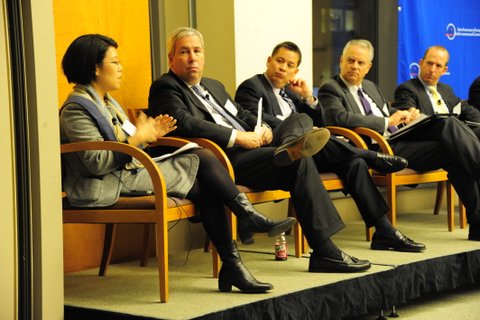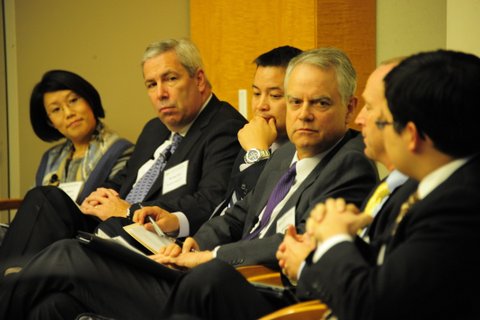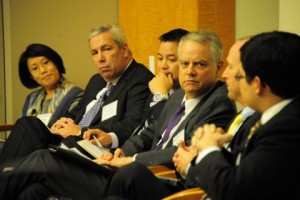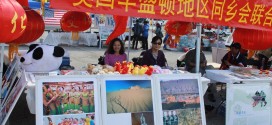By Devika Koppikar
Volumes of natural gas sit beneath U.S. soil, with several Asian countries ready to buy this energy resource. However, the clashing goals of commerce, energy and environmental interests must first be ironed out, experts said at a recent roundtable discussion in Washington.
To help collaborate these various interests and also elevate Asian Americans to take on key roles in facilitating liquefied natural gas (LNG) exports, Asian Americans in Energy, the Environment and Commerce (AE2C) http://www.ae2c.org hosted a roundtable discussion featuring representatives from the three industries on Nov. 13. About 50 people attended the late evening discussion held at Arnold & Porter, LLP on 12th Street, NW in Washington, DC.

“The whole gas industry has turned on its head,” said Bill Allen of Dominion Resources, which is developing natural gas for export. “Advancement in technologies such as horizontal drilling and hydraulic fracturing has allowed U.S. companies to access more natural gas for production.”
Veteran energy journalist Bill Loveless, who moderated the roundtable, said that improvements in liquefying natural gas have further made it a valuable commodity. When natural gas is liquefied by cooling it to -245° F, its volume shrinks, making it easier to store and transport, Loveless said. This is called LNG (liquefied natural gas). With rising demands in Japan, South Korea and Taiwan for this product, the trade opportunities for the U.S. natural gas industry are quickly increasing.
“With the Fukushima nuclear plant shutdown, the Japanese are seeking alternate energy sources,” said Loveless.
At the event, Tristan Abbey, a professional staff member with the U.S. Senate Energy & Natural Resources Committee, explained the politics of further developing LNG. For example, he noted that India, along with Japan, has been courting the U.S. government on natural gas issues. There are also changes occurring in the regulation and permitting process required by the federal government.
“However, China is not as eager (to purchase LNG products from the United States), but eventually it might change,” said Abbey.
Abbey also said that compared to coal or oil, natural gas is a cleaner-burning energy source. “It is cheap and safe for the environment,” he said.
Responding to the Abbey’s comment, an environmental lawyer in the audience, who did not want to be identified, said, “This roundtable gave me a new perspective on LNG and how to extract it without impacting the environment.”
In addition to Abbey, Loveless and Allen, other speakers at the roundtable included Jane Nakano, Center for Strategic and International Studies; Robin Rorick, American Petroleum Institute; and, Michael Shorr, a partner at Arnold & Porter, LLP, which represents international trade clients.
“The goal of this evening was to be able to bridge the cultural gaps between the various sectors of these industries,” said Bob Gee, President of AE2C.
In the future, AE2C plans to host further roundtable discussions with members of the solar, nuclear and wind energy industries.
For further information on LNG, please visit:
U.S. Department of Energy primer on LNG
U.S. Energy Information Administration
 Asian Fortune Your source for all things Asian American
Asian Fortune Your source for all things Asian American





One comment
Pingback: Will Asia Be Looking To US For Natural Gas? « ShaleMarkets.com – Oil and Gas (O&G) Shale Supply Chain